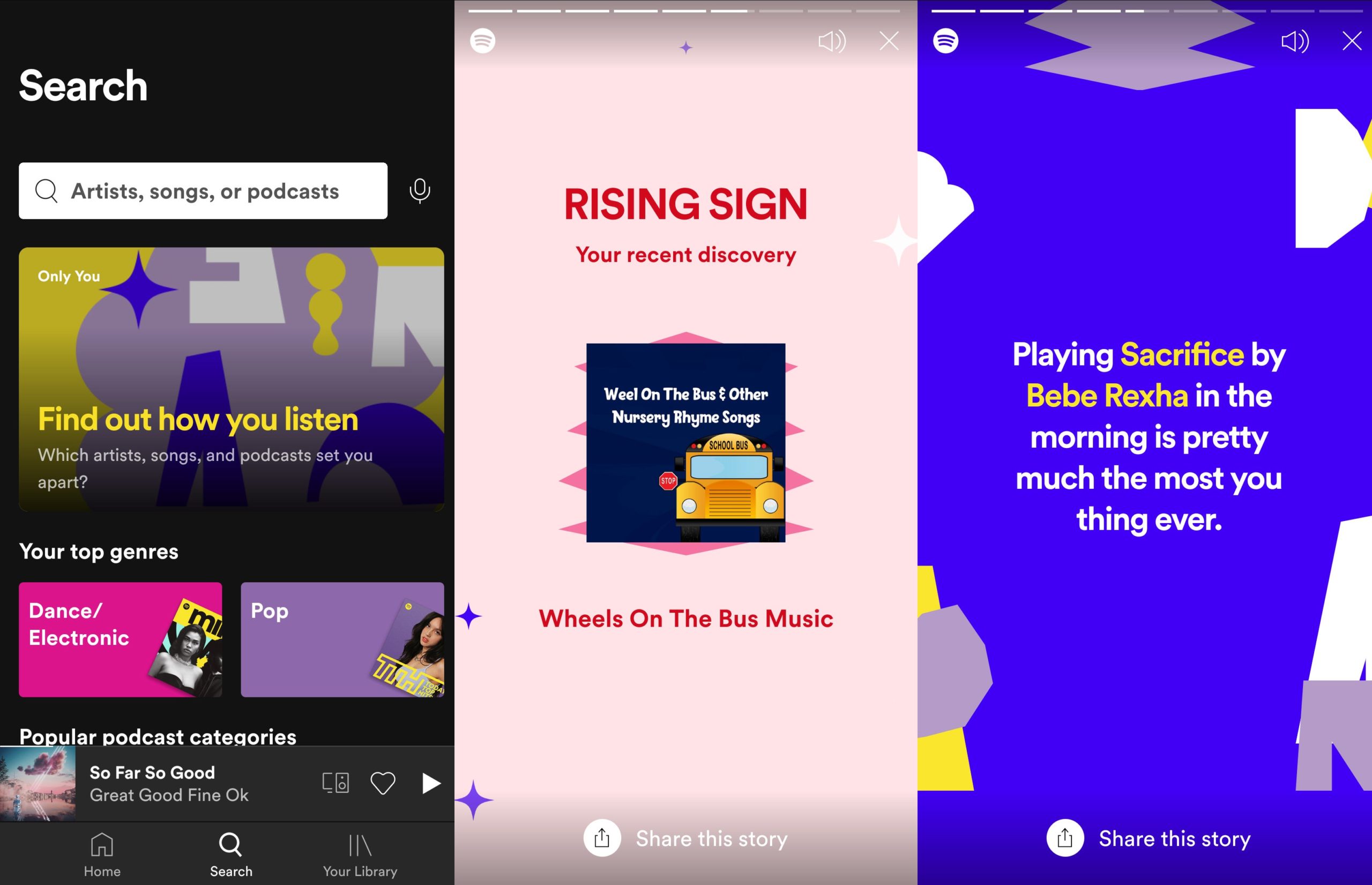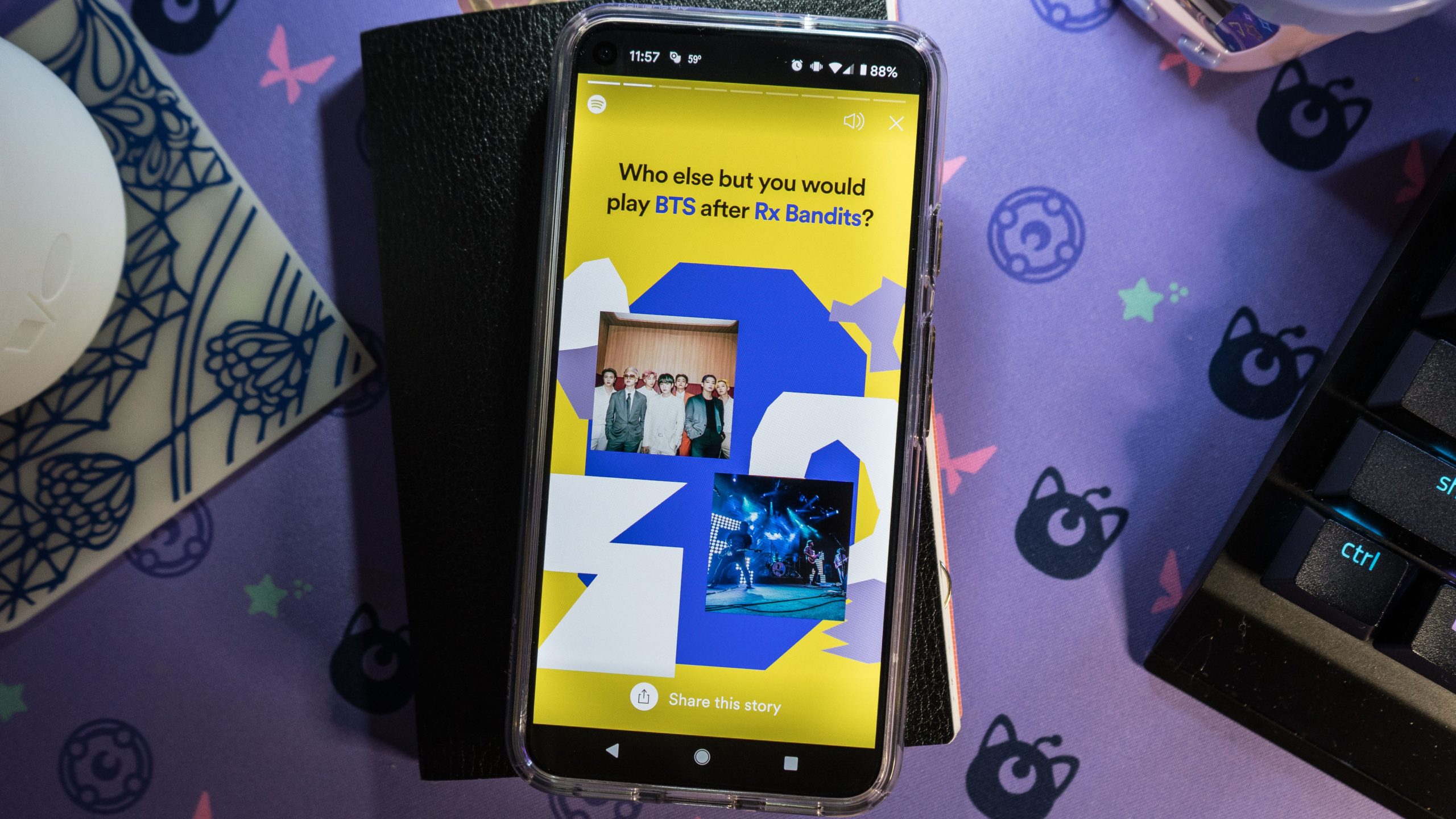In a bid to become the most Instagrammable music service, Spotify announced several new personalised playlists and features. They include the “Only You” in-app experience, similar to the year-end Wrapped playlist, and a beta feature where you can create an algorithm-infused playlist between you and a friend.
You can try out Only You right now, provided the Spotify app on your smartphone is up to date. The shareable story walks you through the latest Spotify has learned about your streaming behaviour over the last six months. It starts with your music horoscope, detailing your Sun, Moon, and Rising as the bands and artists you’ve listened to the most. It’ll tell you which artists would make it to your dinner party, which ones demonstrate your “unique” genre pairings, and the years from which you listen to the most music. Spotify will also let you know if it thinks you’re an early bird or a night owl, plus which combination of music and podcasts “sets your listening apart” from the rest of the populace.

If you decide you want more interaction with friends, there’s a beta feature called Blend, which enables you to combine your tastes with another to create a dynamic playlist. It works similar to the Release Radar and other related playlists aggregating songs weekly based on what you were listening to.
Spotify is also launching a cutesy way to see how the algorithm categorizes you as a fan. For instance, if you happen to fall into the category of Doja Cat listeners who relax to bellowing whale sounds, Spotify will serve you another shareable graphic with the stats. The company refers to this particular feature as “celebrating creators and their fandoms,” but at its core, it’s another look into how the algorithm categorizes you.
Looking at my own Only You readout, I can see how it stacked the varying Venn diagrams of genres to attempt to classify me as a listener. My Moon and Rising artists, for instance, include space music as my “emotional” genre (Moon) and a generalized version of The Wheels On the Bus as my most recent discovery (Rising). My Sun sign was my favourite synthwave band. In essence, all the algorithm did was point out that I have trouble sleeping and I recently had a kid who enjoys music at bath time.

Spotify has managed to carve a niche for itself as a social media-friendly streaming service, helped in part by how well the algorithm can read a person’s tastes. It’s been successful enough that the personalised summary served up to its users at the end of every year is now a meme we expect to see sprout up around the holiday season. It’s betting on it as an edge as it finds ways to compete against other streaming services, namely Apple Music and YouTube Music, which took over for Google Play Music and offers video as part of its packaged deal.
The new personalisation features are undoubtedly fun to use. They come at the cost of finely tuned data collection — something Spotify pegs as an “intelligent” algorithm based on listeners’ moods but feels more like emotional surveillance. Spotify presents the Only You feature with the context that it “gets” who you are, helping to solidify it as the app you launch to play what you need to hear. What it’s getting is that I’m a tired parent who has trouble falling asleep and wishes she could go to concerts again. The algorithm works!
Only You will be available as a standalone feature on the main Spotify page through the end of the month. Then it’ll be accessible through the Made for You hub. You can opt-out of some of the algorithm-feeding features by listening to Spotify with a private session or ticking on the Privacy feature in the Spotify settings.
